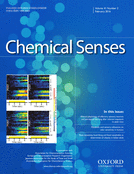 “Cancer-related cachexia and anorexia syndrome (CACS) is a common phenomenon in cancer patients. Cannabis has been suggested to stimulate appetite but research on this issue has yielded mixed results. The current study aimed to evaluate the effect of dosage-controlled cannabis capsules on CACS in advanced cancer patients.
“Cancer-related cachexia and anorexia syndrome (CACS) is a common phenomenon in cancer patients. Cannabis has been suggested to stimulate appetite but research on this issue has yielded mixed results. The current study aimed to evaluate the effect of dosage-controlled cannabis capsules on CACS in advanced cancer patients.
Methods: The cannabis capsules used in this study contained two fractions of oil-based compounds. The planned treatment was 2 × 10 mg per 24 hours for six months of tetrahydrocannabinol (THC) 9.5 mg and cannabidiol (CBD) 0.5 mg. If patients suffered from side effects, dosage was reduced to 5 mg × 2 per day (THC 4.75 mg, CBD 0.25 mg). Participants were weighed on every physician visit. The primary objective of the study was a weight gain of ≥10% from baseline.
Results: Of 24 patients who signed the consent form, 17 started the cannabis capsules treatment, but only 11 received the capsules for more than two weeks. Three of six patients who completed the study period met the primary end-point. The remaining three patients had stable weights. In quality of life quaternaries, patients reported less appetite loss after the cannabis treatment (p=0.05). Tumor necrosis factor-α (TNF-α) levels decreased after the cannabis treatment but without statistical significance. According to patients’ self-reports, improvement in appetite and mood as well as a reduction in pain and fatigue was demonstrated.
Conclusions: Despite various limitations, this preliminary study demonstrated a weight increase of ≥10% in 3/17 (17.6%) patients with doses of 5mgx1 or 5mgx2 capsules daily, without significant side effects. The results justify a larger study with dosage-controlled cannabis capsules in CACS.”
https://www.ncbi.nlm.nih.gov/pubmed/31595793
“The primary objective of the study was a weight gain of ≥10% from baseline. Despite various limitations, the current preliminary study demonstrated a weight increase of ≥10% in 3/17 (17.6%) of the patients with doses of 5 mg × 1 or 5 mg × 2 capsules daily, without significant side effects.”


 “Despite the growing knowledge on the functional relationship between an altered endocannabinoid (eCB) system and development of anorexia nervosa (AN), to date no studies have investigated the central eCB tone in the activity-based anorexia (ABA) model that reproduces key aspects of human AN.
“Despite the growing knowledge on the functional relationship between an altered endocannabinoid (eCB) system and development of anorexia nervosa (AN), to date no studies have investigated the central eCB tone in the activity-based anorexia (ABA) model that reproduces key aspects of human AN.





